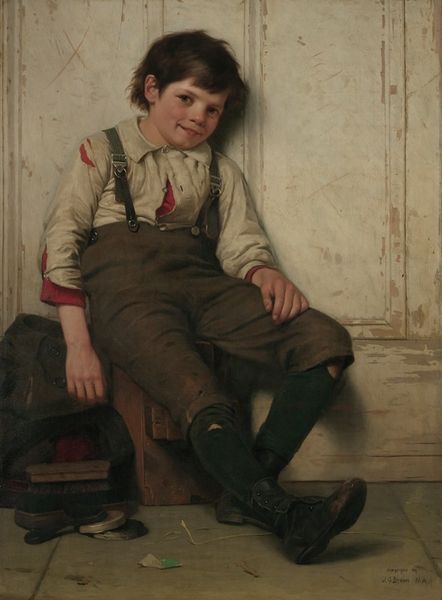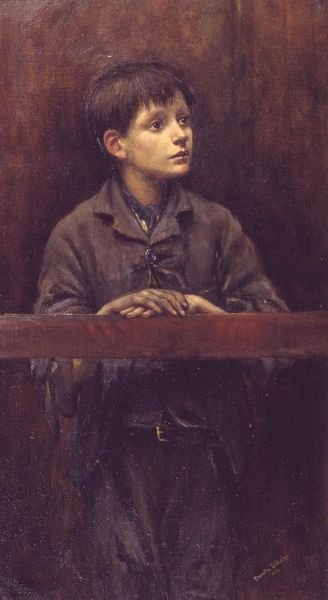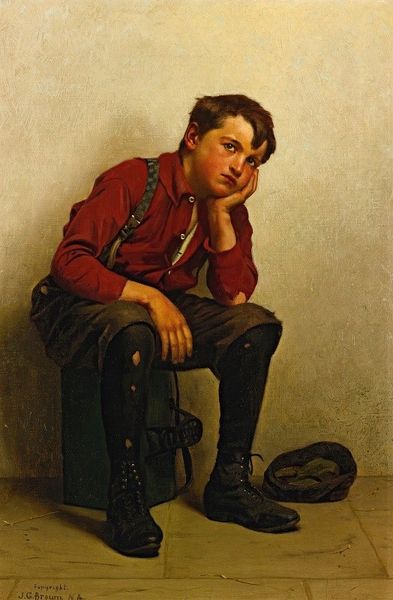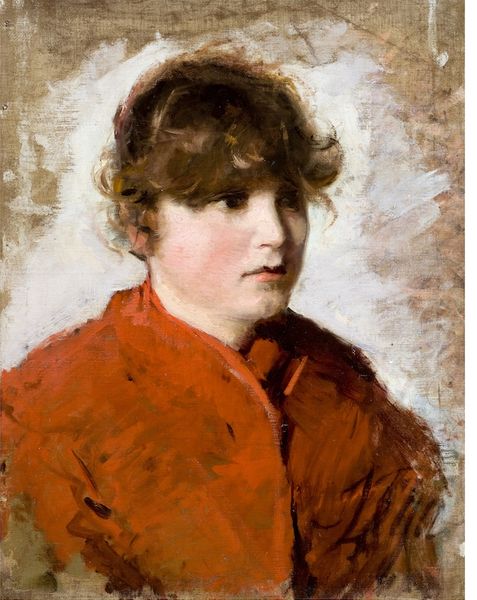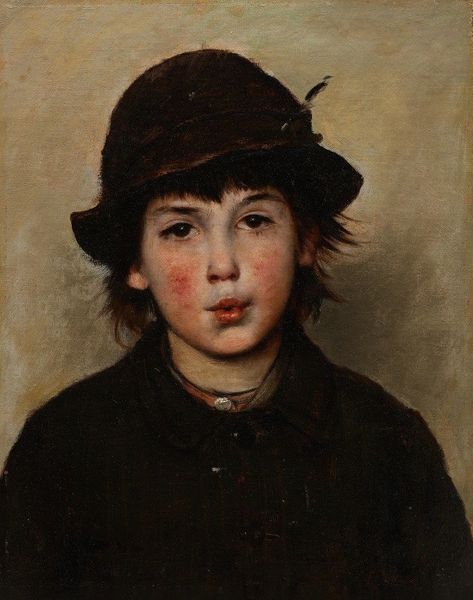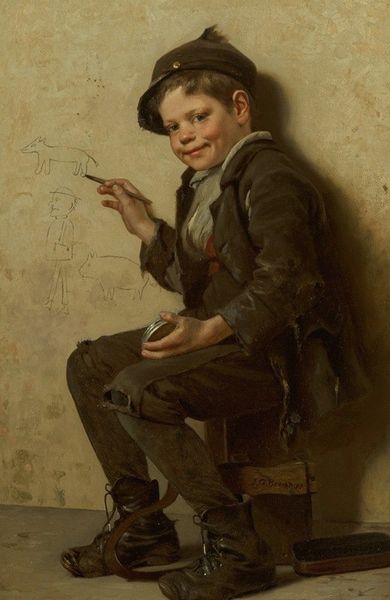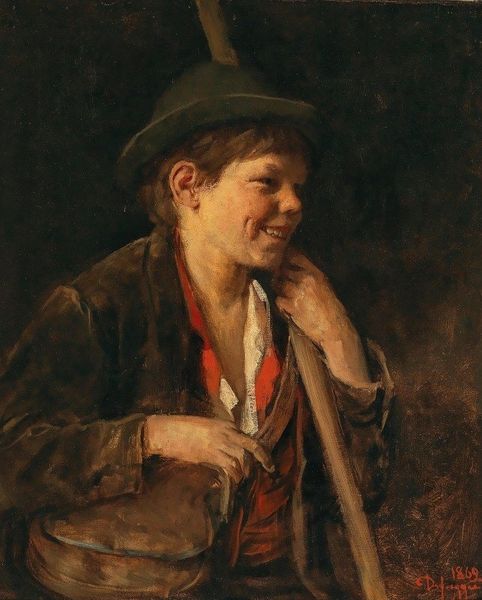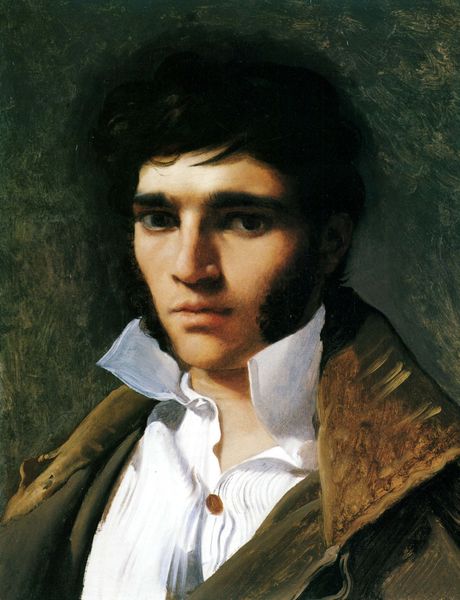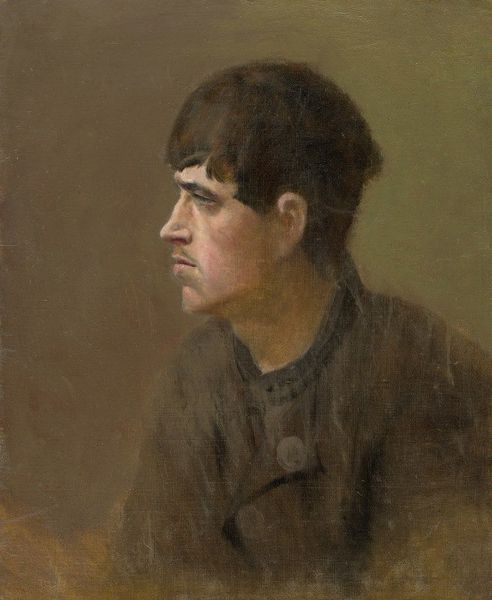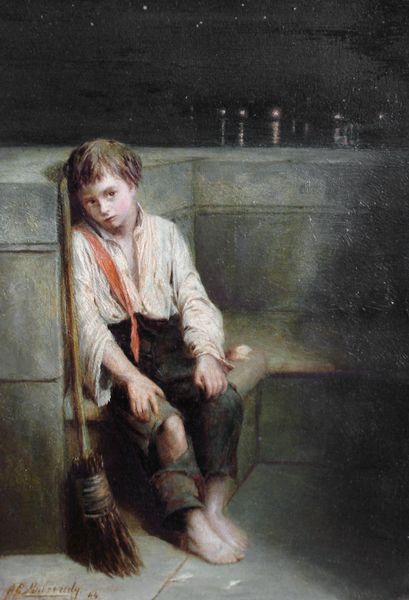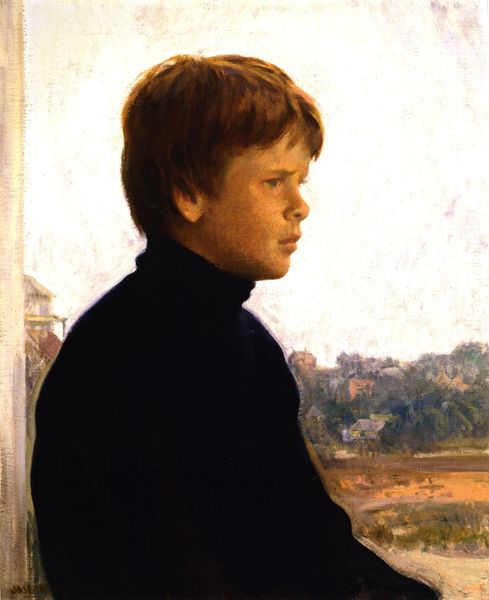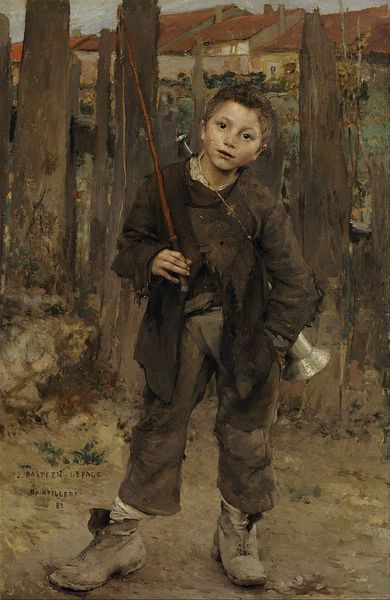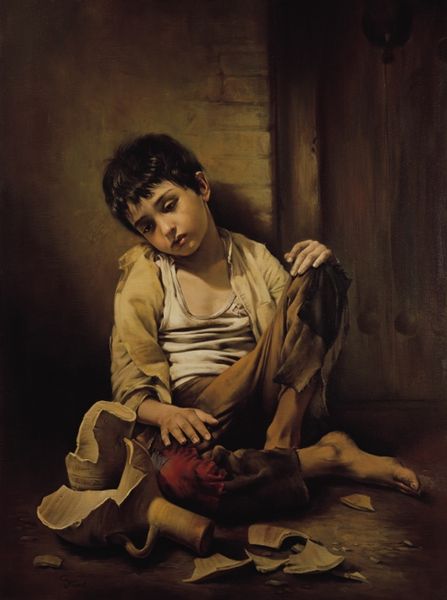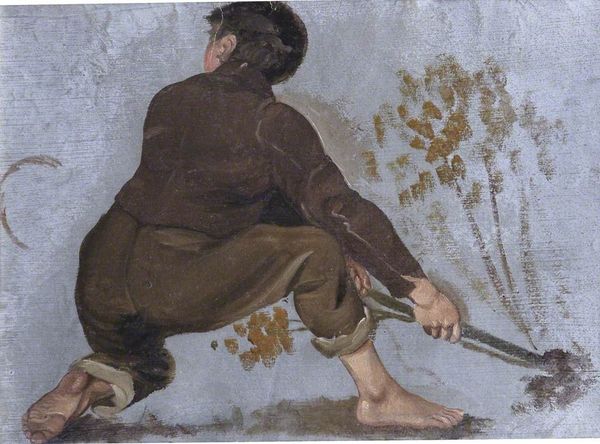
Copyright: Public domain
Editor: This is Eastman Johnson's "The Savoyard Boy," painted in 1853 using oil paints. There's a kind of quiet melancholy in the boy's eyes, and it makes me wonder about his story. What do you see in this piece? Curator: I see a complex social commentary masked as a simple portrait. Johnson's choice to depict this young European immigrant is loaded with the politics of representation. How would you interpret this work knowing that it was produced in the United States amidst rising anxieties about immigration and poverty? Editor: So, it's less about the boy as an individual, and more about what he *represents* to the American public at that time? His clothing, the implied hardship – they’re visual cues that play into pre-existing biases? Curator: Precisely. And consider the artistic climate of the mid-19th century. Genre painting was becoming increasingly popular, often depicting scenes of everyday life. But who *got* to be portrayed, and how? This painting participated in a broader visual culture that constructed narratives about marginalized communities. Do you think the sentimental depiction of the boy challenges or reinforces stereotypes? Editor: That's a tough question! It's like Johnson's trying to evoke empathy, but maybe also inadvertently exoticizing the boy at the same time? Like presenting a "respectable" poor child? Curator: That tension is exactly what makes it interesting. It's important to analyze *how* the artist portrays his subject. Is he offering a pathologizing gaze, one that others the boy based on his poverty? It prompts important questions about the power dynamics inherent in the act of representation. Editor: I hadn't considered how the social and political atmosphere of the time played such a huge role in how a piece like this would have been viewed and interpreted. Now I realize art isn’t just aesthetic, but is shaped by culture. Curator: Precisely. Examining the historical context allows us to understand its layered meanings and continued relevance in conversations about social justice and representation today.
Comments
No comments
Be the first to comment and join the conversation on the ultimate creative platform.
